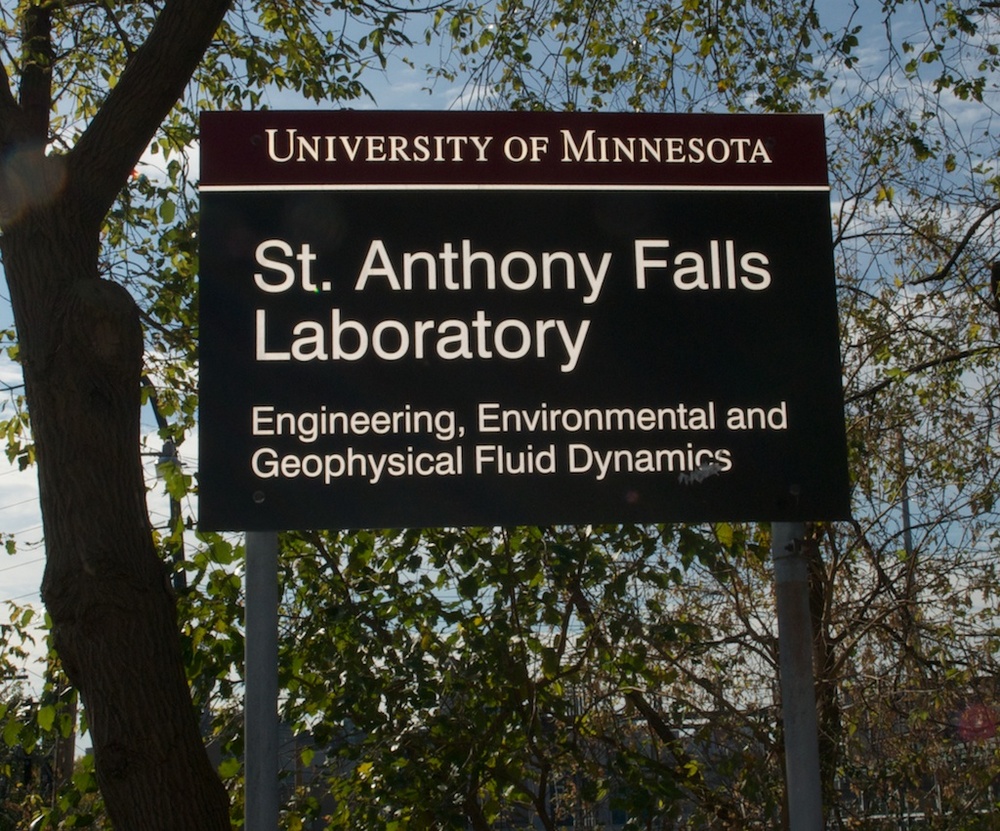St. Anthony Falls Laboratory makes algae cell swimming discovery



Photo: Paul Nixdorf
October 25, 2011
BY Luke Geiver
The St. Anthony Falls Laboratory on the banks of the Mississippi River in downtown Minneapolis originally formed to study hydroelectric energy, but today the research team at St. Anthony is working on projects that range from wind energy to the swimming patterns of algae. Miki Hondzo, civil engineering professor and team leader at the facility, explained the research projects currently happening there to the participants of the 2011 Algae Biomass Summit preconference workshop. Hondzo had a clear message on the challenges of scaling up from the lab to the commercial level: “You have to understand mechanics, you have to understand processes at mechanistic levels,” he said. For Hondzo and his team, that means understanding the swimming signatures of algae.
The team at St. Anthony Falls is working on a photobioreactor approach that harnesses its knowledge of the swimming patterns used by algae. “If you just tweak fluid flow,” Hondzo said, “you can eventually use it for your advantage.” The team used digital holography to study algal cells and the way they react when their environments (in this case, water) cause them stress through movement. As Hondzo explained, digital holography is when a coherent light source like a laser is used to shine a light on an object, an algal cell, and the result is an image behind the object created by the interference known as a hologram. After running a hologram-creating procedure in a bioreactor, the team used a three-dimensional modeling approach that allowed them to recreate the effects of fluid movement in the bioreactor, and how the algal cells in that bioreactor act.
Before they introduced a sheer flow into the bioreactor, they also recorded the way the algal cells moved throughout the bioreactor with no fluid movement. Those cells, Hondzo explained, “look like a band of spaghetti, interwoven and sporadically placed” throughout the bioreactor. After introducing a flow that moved water in the bioreactor from left to right, however, that “spaghetti” image became concentrated into two very thin layers with one above the other. The question Hondzo asks is, “Why do they change swimming patterns from randomly swimming trajectories to very concentrated trajectories?”
Advertisement
Using additional video footage of the algal cells once they are affected by a sheer flow, Hondzo explained that the cells, when not affected by sheer flow, will spin and rotate, but when a flow is introduced, they will not. “It turns out,” he said, “that cells are riding on the veracity of the flow. If you can picture a surfer surfing,” he explained, “the surfer is surfing parallel to the shoreline, the surfer is extracting the veracity from the flow.” The algae cells are acting in the same way, or as he said, they “have a free ride” when a sheer flow is introduced in a bioreactor. “If you have certain flow conditions in the bioreactors, you can precisely manipulate where you want to put very large algal biomass,” something he said is a direct result of a better understanding of mechanics. Because of the location of the research facility, Hondzo said his team will take advantage of the 10,000 lakes Minnesota has to offer to further test and document the swimming patterns of algae when affected by sheer flow.
Advertisement
Upcoming Events





